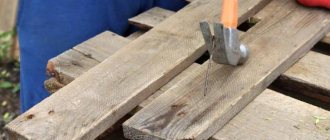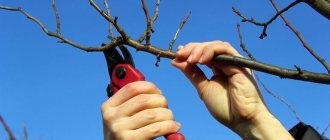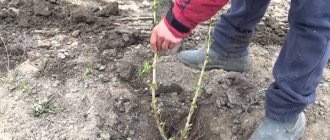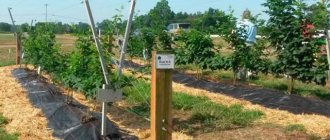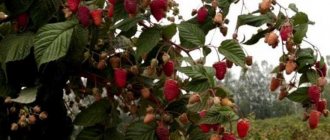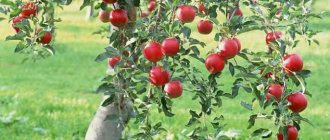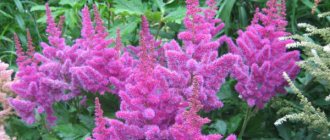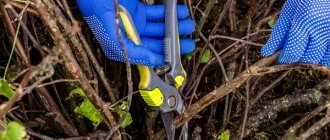Blackberry shelter for the winter
Let's say right away that creeping varieties of blackberries are less hardy to frost.
They can withstand down to -17 degrees, while frost-resistant upright varieties feel normal even at -20 degrees. We can conclude that only gardeners in the southern regions can afford to leave blackberries for the winter. It is best to bend blackberry shoots for the winter. As you know, a blanket of snow is the best insulation, and with it, blackberries are not afraid of frost. Therefore, the faster the blackberry is covered with snow, the more reliable its protection will be.
From this point of view, it is easier to cover creeping blackberries for the winter. But there is also a way out for upright varieties: to prevent the stems from breaking from sharp bending, after pruning the blackberries for the winter, from the beginning of autumn, a weight is attached to the tops of the shoots. Under his weight, the blackberry gradually bends down. If tall blackberry shoots grew on a trellis, they are simply untied and the shoots droop naturally.
Before covering blackberries for the winter, they should be treated with copper sulfate or fungicides to prevent fungal infections from spreading in winter.
In any case, before covering the blackberries for the winter, the root zone is insulated - with mulch, boards. The main thing is that the shoots do not lie on damp ground. The blackberry stems are tied in a bunch and bent to the ground using staples or the same boards that are carefully placed on the blackberry. And from above the shoots are insulated with insulating and/or covering material (this will depend on the climatic conditions of the region and the frost resistance of the variety).
How can you cover blackberries for the winter? In fact, an excellent structure can be invented from improvised means with the help of imagination. The most popular shelters among gardeners are the following:
— Non-woven covering material. The undisputed leader in the quality of shelters for garden crops for the winter, since it is capable of transmitting both air and moisture. These are Lutrasil, Agrospan, Agrotex, Spandbond. It is best to use wide canvases (1.6 m) with a density of approximately 50 g/square in two layers (1 layer with a density of 100 g/square is also possible). Yes, you will have to buy such material, but it will serve you for many seasons and is guaranteed to protect blackberries in winter from freezing and damping off. The color of the non-woven material does not play a key role, but if you have a choice, give preference to white: it reflects sunlight better.
— Polyethylene film. Not very reliable protection as an independent shelter for blackberries for the winter. But together with synthetic non-woven material they form an excellent alliance - moisture will not get into the blackberry shelter. The main thing is to select sheets of non-woven material and film of the same size and securely fix their ends (tuck them in, sprinkle them with soil and press them down with stones).
— Straw, dry leaves, sawdust. These seemingly most popular mulches in the case of blackberries are not the best option. Leaves and straw are an ideal home for mice, why harm yourself? Of course, you can use a mixture of creolin and sunflower oil (half a liter of oil - 50 g of creolin) to protect blackberries from rodents in winter. It’s also better not to take sawdust - they quickly absorb moisture, turning into an ice block with blackberry lashes inside. In the spring, this piece of ice will melt for a very long time, not allowing the ground to warm up and thereby slowing down the development of the bush.
In addition, in the spring you will be faced with a problem - how to get rotted straw and leaves out of a blackberry bush, especially if you have thornless varieties? Therefore, if you want to cover it with something organic, take large plants, for example, corn.
— Spruce spruce branches are a very good option for shelter. And rodents don’t like it, and it’s easy to remove in the spring. It can be used as an independent covering material for blackberries in winter, or as an insulating material under non-woven synthetic material or film.
In the spring, with the arrival of warmth, the blackberry shelter for the winter is gradually dismantled. That's all the difficulties. If you have any questions about pruning and covering blackberries for the winter, we hope this video will help you figure it out. Have a good harvest!
Attention, TODAY only!
Similar
When to cover, at what temperature
The optimal time for wrapping blackberries depends not only on its specific variety and type, but also on the region in which the site is located. It is recommended to start work when the air temperature in the area is within -5...-70C.
In the Moscow region, Central zone
Winters in central Russia cannot be called very cold, but this area is characterized by sharp temperature changes and severe short-term frosts, which blackberries are so afraid of. The amount of snow may also be insufficient to naturally cover the bushes, so gardeners in the Moscow region and Central Russia have to carefully cover the plants. Work is expected to begin in mid-November, based on weather reports.
How to cover blackberries for the winter: video
In the Urals
The Ural winters are some of the harshest in the country, but they do not prevent gardeners from growing this berry crop on their plots. Even the most winter-hardy blackberry varieties have to be thoroughly covered in the conditions of the Urals. Taking into account the weather, they begin to wrap the bushes in the second half of October.
In Siberia
The short Siberian autumn and quickly approaching winter force summer residents to cover blackberries already in mid-October. In order for the crop to survive the long cold winter, it is carefully covered, organizing capital multi-layer shelters.
In the Leningrad region
Despite the fact that winters in the Leningrad region are mild and snowy, the real problem in wrapping blackberries for the winter is the high humidity in the region. If you cover it too early and/or remove the protection too late, the bushes become overheated and begin to hurt. And if the rotted shoots can be cut out during spring pruning, then as a result of the roots rotting, the bushes may die. Therefore, in November you need to carefully monitor the weather reports and try to determine the most suitable date for this event.
What are the differences between blackberry varieties?
How to prepare hydrangea for winter in the Urals
Everything you need to know about this noble plant: briefly, succinctly and to the point - pruning blackberries of various types, optimal rationing and types of bush shaping, mounting on a trellis. But first, let’s figure out how the types of culture differ and what are the features of care.
- Straight-growing brambles reach 3 m and above, there are many replacement shoots growing from the rhizome, like raspberries, which bear fruit on two-year-old shoots. They reproduce by green and lignified root suckers and cuttings.
- Dewberries have long vines with many fruit branches that do not produce root shoots - this is the main difference between most varieties. They form replacement shoots growing from the rhizome. Mainly propagated by tips - pulps, cuttings. Root suckers are formed only as a result of damage to the mother root during digging, which is sometimes practiced for propagation. Reproduction of creeping - by rooting the tops and green cuttings.
Planting and forming bushes
How to cover a climbing rose and prepare it for winter
It is unlikely that there will be a plant as thorny as the blackberry in the garden. Its thorns cause problems not only during harvesting, but also during crown formation. Of course, autumn pruning of thornless blackberries is much easier than removing excess shoots from their thorny counterparts. But the varieties of this variety are not characterized by high yields and winter hardiness, so gardeners prefer to grow the “spiny” species.
To further facilitate the pruning procedure, you should take a responsible approach to choosing a planting site. Blackberries love good light and will bear fruit well in partial shade or sun. But the lack of light will negatively affect the yield of the bush, the berries will become smaller and their taste will deteriorate. Young branches will reach towards the sun and further shade the fruitful shoots. The increase in green mass can last until autumn, due to which the winter hardiness of the plant will noticeably decrease.
Although blackberries are a frost-resistant plant, they will have a hard time in the harsh winter. Therefore, for planting it is worth finding a place that is well lit and protected from drafts and winds. This will help the bush to successfully overwinter.
Like raspberries, blackberries are placed in a separate area, at a distance from other plantings. It is recommended to separate the bed with a box, and dig beams along its edges to construct a lattice (trellis), which will serve as a support for the bushes.
In order to be able to freely approach each bush in the future, you will have to maintain a distance when preparing planting holes. Creeping varieties are planted at a distance of 4.5 meters from each other, and erect varieties - 3.5 meters. This spacing will allow the shoots to be attached to the trellis, as well as allow them to move freely between plants. This will greatly facilitate harvesting, pruning and other care procedures.
Fan arrangement of the crown
Of course, upright blackberries are frost-resistant, but it is still better to hide them under snow for the winter. But this task is complicated by the branches of the plant - they bend poorly and are very brittle. A fan-shaped crown formation will help solve this problem:
- In spring, lignified blackberry branches are lifted from the ground and placed on a trellis in a vertical position. They are fixed in the middle of the trellis, just above the roots.
- Young shoots are tied to the lower parts of the lattice so that they grow horizontally, that is, parallel to the ground.
- In the fall, it will be convenient to cut off everything unnecessary without removing the necessary branches. All central shoots are cut off at the root, and the creeping lateral shoots are not touched.
- The slightly bending side branches grew almost in a recumbent state all summer, so by autumn they managed to acquire a horizontal shape. Among them, about 10 of the strongest are selected, and the rest are cut off.
- Overwintering branches are shortened a little, after which they are pressed to the ground and covered.
- In the spring, after these shoots have warmed up and become more flexible, they are attached to a support in a vertical position.
Weaving and rope
Rope and wicker placement of shoots is used for creeping forms that have branches 10 meters long. These methods are very similar, but in the second case, the overwintered stems are divided into two equal bundles, which are then twisted together to give the branches stability.
But if there are very few shoots, then they are simply collected to form a rope.
Formation technology:
- The branches are collected using one of the methods described above.
- They are wound on the grid, like on a reel.
- If excess branches were not removed in the summer, then this is done in the fall. The 8 strongest ones are left, and the rest are cut off.
- The fruiting vine is cut out at the root.
- Trenches are dug along the beds, into which bushes taken from the supports are placed.
These bush shaping techniques help you prune without fear of sharp thorns. The gardener does not need to wade through thorny branches to remove excess ones. Varieties without thorns, of course, win in this matter; they do not need to be carefully untangled in the spring, and before wintering, lay lashes reminiscent of barbed wire.
How to properly protect garden blackberries from frost
In order for the shelter to fulfill its protective function, it must be installed correctly. Below are step-by-step instructions for wrapping garden blackberries for cold regions of the country.
- In the circle around the trunk, in the places where the blackberry branches removed from the support will be laid, planks are laid out. This will ensure that the branches do not come into contact with the ground.
- Blackberry branches need to be collected into bunches and tied. If the bush is large, several sheaves are formed on it. Twine is used for tying.
- Bending down shoots is a very responsible task that requires care and attention. To prevent the shoots from breaking at the base as a result of the application of force, they are bent over the knee. Bunches of shoots are laid in the opposite direction from the center of the bush. If an upright blackberry cannot be bent down, it is covered with boxes, slate, etc.
- You can fix bent bunches in different ways: tie them together (if there are several bushes) or fasten them to a support. The optimal height of bent shoots should not exceed 50 cm.
- The laid branches are covered with a thick layer of mulch, after which the agrofibre is stretched, the blackberries are covered on top and secured around the perimeter with weights: earth, stones, bricks or even plastic bottles with water.
- Insulation is laid on top of the covering material. You can do without it by wrapping the blackberries in a double layer of agrofibre.
- The last layer is applied to the film and secured around the perimeter. Vent holes must be open.
Diseases and pests
Do I need to cover peonies for the winter? How to prepare peonies for winter
Among blackberry diseases, the following are quite common:
Anthracnose - appears when there is excess moisture, most often during prolonged rain and dampness. Purple spots and cankers appear on young stems, and in winter, the affected stems die.
To prevent the appearance of the disease, you should get rid of weeds and mulch with manure. Treated with fungicides, including Bordeaux mixture.
White spotting appears as slightly brownish white spots. It is treated with copper-containing medications.
Didimella leads to drying out of the foliage, death of the buds and drying out of the entire bush. The onset of the disease can be determined by brownish-purple spots on the shoots.
Gradually, the buds begin to turn black, and the foliage begins to become covered with spots, break and dry out. To protect yourself from this disease, you need to apply fertilizers on time and disinfect your kidneys with Bordeaux mixture in the spring.
Botrytis attacks the berries and covers them with gray rot. To prevent this from happening, you should not allow dense thickets in which the berries can begin to rot.
Powdery mildew is the most common disease. It covers all parts of the plant with a whitish coating. Treatment is usually carried out with copper-containing substances.
Pests may include mites, crimson bud moths, weevils, aphids, caterpillars and others. Usually, in order to destroy these pests, it is necessary to treat with insecticides, for example, Actellik or Fitoverm. Acaricides help against ticks.
Fertilizing
After watering, you need to fertilize. In autumn, blackberries require fertilizers of mineral and organic origin.
Under one bush add:
- superphosphate - 100 g;
- potassium fertilizer that does not contain chlorine - 35 g.
Most often, potassium sulfate or potassium magnesium is used, which should be carefully embedded in the circle around the trunk to a depth of 10 cm.
The use of potassium and phosphorus fertilizers in the fall has a good effect on the rate of ripening of blackberry shoots, thereby improving winter hardiness and accelerating the process of natural preparation for wintering.
Attention! Potassium and phosphorus fertilizers should be applied together. Thanks to potassium, blackberries become more resistant to frost.
For the winter, the crop must be additionally fed with manure, compost (at the rate of 6 kg per plant), chicken manure, peat, and ash. Every 3-4 years, fertilizers of mineral origin can be mulched on top with manure and humus.
General rules for caring for remontant blackberries
Taking cover
The first thing gardeners do when spring arrives is to remove the coverings that protected the plant from frost and cold winds in winter.
The covering material is removed gradually, but always before hot spring weather sets in, otherwise the difference in night and day temperatures will lead to the formation of condensation. Condensation can cause mold to grow under the shelter, which affects the root system and prevents a full harvest.
It is also impossible to open blackberries too early; the threat of return frosts must pass. It is advisable to open bent shoots in two stages. Remove the snow and soil layer, then remove everything else. This way the plant will be able to adapt to new conditions faster and easier.
Watering
Blackberries must be provided with water from the first days of the growing season. Of course, it is necessary to take into account the amount of precipitation and soil moisture after the snow melts. If you overdo it and over-moisten the blackberry bushes, then excess moisture can lead to the development of various forms of rot, primarily in the root system.
In the summer and until the end of fruiting, watering is carried out on average 2 times a month.
Feeding
Only adult plants of remontant blackberries need fertilizers; for the first years, the seedlings will have enough nutrients that are added to the hole during planting. Spring fertilizing must contain nitrogen, which stimulates the active growth of green mass.
The following compositions can be used:
- mullein, which is pre-diluted with water 1:10;
- compost about 5 kg. per plant;
- nitrophoska 15 g under the bush;
- urea diluted in a bucket of water in the amount of 30 g;
- bird droppings, which are bred much more strongly than mullein, otherwise there is a danger of burning the root system - 1:20.
Protection from pests and diseases
The first thing you need to think about when planting a blackberry plantation is its proximity to other plants. You should not plant remontant blackberries near raspberries, roses, hawthorns or strawberries. The fact is that all of the listed crops have the same diseases and pests. Once one plant gets sick, all neighboring ones are affected.
The worst pest of blackberries is the mole cricket. It is necessary to eliminate its clutches in the fall. If you ignore this event, you can lose not only the harvest, but also the bushes themselves. The second danger is aphids. Moreover, it is dangerous for two reasons at once: it sucks juices and spreads viral infections. In addition, cockchafers, raspberry mosquitoes, ticks and sawflies like to feast on remontant blackberries.
Against all of the listed pests, bushes are treated with insecticides only during the period when young shoots begin to grow and the plant has not yet begun to bloom.
One of the preventive measures against diseases and pests is the correct planting scheme. Sparsely planted bushes, with stems tied to a trellis, are better ventilated and illuminated by the sun. Blackberry bushes should be planted at a distance of at least 1 meter from each other. And for some varieties the interval can reach 3 meters.
Preparing for winter
Remontant varieties of blackberries are good because in regions with harsh winters they are simply cut off at the root and the plantation is covered with any mulch or non-woven material. In the southern regions, blackberries do not need shelter.
On the eve of winter, you need to take care of sanitary pruning and moisture-replenishing watering.
How to cover blackberries
Various materials are used to organize blackberry shelter.
To mulch the tree trunk circle of the bush and protect the root system, choose mulch that does not acidify or alkalize the soil. The fact is that blackberries prefer to grow on soils whose pH level is in the range of 5.7...6.5. In this regard, fresh sawdust is not used as mulch.
Rotted sawdust has completely different properties - it does not absorb excess moisture when snow melts, and does not contribute to the loss of nitrogen and acidification of the soil. They are easy to prepare: just mix them with urea and keep them under film for 2 weeks. In addition to rotted sawdust, buckwheat, sunflower husks, and corn leaves are suitable as mulching materials.
The covering material that will separate the insulation from the blackberry shoots must be breathable. Here they use white agrofibre: lutrasil, spunbond, which will prevent plants from suffocating and will allow air to pass through, which is necessary even during the dormant period.
The film can only be used in the very top layer of the shelter. The film structure must provide vent holes through which air will flow to the bush. These openings should be closed only during the most severe frosts.
For shelter, boxes are often used, made from a variety of materials - wood, polystyrene foam.
Planting remontant blackberries
Comparison of spring and autumn planting
The debate about when is the best time to plant blackberries continues. Gardeners come to the conclusion that this is not of fundamental importance; it is simply necessary to focus on the climatic conditions of a particular region.
In the southern regions it is better to plant in the fall. Winters are not cold, the likelihood that a young seedling will not survive the winter well is minimal. For example, in the Krasnodar region, blackberries can be replanted without fear even in December. In spring, in regions where heat sets in early, a young plant may not be able to withstand the hot sun.
In the Moscow region, planting in the fall carries with it certain risks. You may not calculate the time of the first frost and the fragile plant will die. In order for blackberries to go safely over the winter, they must take root, which is why spring planting is recommended in most of Russia.
Selection and preparation of a site
It is important to place the crop in a sunny place. Remontant blackberries only gain sugar content if they receive enough sunlight
It is advisable that there be at least one and a half meters from fences and buildings. The second important requirement for choosing a location is a low groundwater level. With stagnant humidity, there is a danger of rotting of the root system.
Remontant blackberries give an excellent harvest on fertile soil. Therefore, the site must be pre-fertilized. It must be taken into account that, compared to raspberries, blackberry roots spread to a greater depth. Digging is done deep, and fertilizers are applied to the planting holes to a depth of at least 0.5 meters. For each pit you will need 5-6 kg. manure, 140 g of superphosphate and 50 g of potassium supplements. All fertilizers are mixed with the ground to prevent direct contact with the roots. Such preparation of the site will be enough for 3-4 years.
Requirements for seedlings
When purchasing seedlings, you need to pay attention to the following points:
- leaves should be green;
- the height of the seedling must be at least 30 cm;
- There should be no whitish spots on the roots, which indicate fungal diseases.
If you plant a heat-loving remontant crop in regions with cold winters, it will not be able to survive the cold safely and will not have time to produce a second harvest
Therefore, it is necessary to pay attention to varietal characteristics and choose zoned varieties
Landing technology
Improperly organized planting and an unsuccessful choice of scheme will certainly affect the yield.
The technology directly depends on what kind of shoots the blackberry has:
- The bush method is suitable for low-growing compact varieties. 2-4 seedlings are planted in one hole and tied to one support.
- If the shoots are long, use the tape method. Each seedling is planted in a separate hole at a distance of 1 m from each other. At least 2 m are left between the tapes. Subsequently, the shoots are tied to trellises.
The roots of the seedling are carefully straightened, then sprinkled with soil and watered. The root collar is raised 2-3 cm above the ground, the ground is compacted so that there are no air cavities left.
Remontant blackberries are an excellent option for gardeners who want to get high yields of berries from a small area. Agricultural technology is simple. The main thing is to plant the plant in fertile soil, not to over-moisten it and not allow the roots to dry out for a long time, and to carry out sanitary pruning in a timely manner. If blackberries are grown in an open, sunny area, problems with pests and diseases will be minimized. This means that there is every chance to grow environmentally friendly products, without the use of chemicals.
When to open blackberries after winter
If you choose the wrong opening time, you can lose the plant and the harvest.
- Early opening. The main goal is to maintain the health of the bush. In this case, fruiting shifts somewhat. The bushes begin to open in March, immediately after the snow melts. In the central zone of Russia, the weather is used as a guide. Depending on the climate, blackberries are opened in early to mid-April. After removing the protective material, the shoots are left on the ground. You cannot immediately tie it to a trellis. They carry out sanitary cleaning of the area, remove mulch and rotten parts of the plant. It is best to throw a white non-woven material over the bush to avoid overdrying. They begin tying up after 2 weeks, after the air and soil have warmed up well.
- Late disclosure. Open 3 weeks after the snow has completely melted. By this time, the root system will “wake up” and the above-ground part will be able to receive a sufficient amount of nutrients. After several days of adaptation, the plant can be fixed on the trellis; the main thing is not to damage the fruit branches, which by this time will most likely begin to develop well. When using this method, fruiting time occurs earlier.
- From the moment the snow begins to melt, layers of covering material are removed gradually. Fruiting does not shift, but the method itself takes a lot of time and effort and does not work well in commercial growing conditions.
REFERENCE. The champion in frost resistance is the “Agave” variety. Overwinters at temperatures below -20 °C.
How to prune blackberries in spring and autumn. Technology and recommendations
Gardeners warn that pruning blackberry bushes is a troublesome and not the easiest task. However, if you put in some effort, even beginners will succeed.
It is important to follow a clear pattern:
- The first pruning is carried out immediately after the bush takes root. All branches are shortened to a height of 25 cm, and the top is also trimmed.
- In summer, the root shoots of blackberries are removed. During the same period, you can cut out weak, diseased shoots, as well as those that interfere with the formation of the bush.
- In the first autumn after planting, blackberries are left with 8-10 branches. As a rule, a healthy bush consists of exactly this number of shoots. If there are more of them, you need to leave the strongest ones. Diseased and weak branches should be cut just below soil level. The remaining shoots of straight-growing varieties should not exceed 1.8 m. In creeping varieties, the lash is removed, starting from the bend, cutting it off immediately after the bud.
- Next spring, remove all damaged and frozen branches. The rest are cut by 10-15 cm, to a healthy bud.
- Some owners prune blackberries at the beginning of summer, shortening the fruit-bearing branches. This helps redistribute the load on the bush (berries appear in the middle of the shoots), and also stimulates the appearance of new shoots.
After this, annually, every next fall, carry out the procedure for pruning blackberries in this way:
- cut off all the branches that bear fruit this year - completely, at the root;
- remove thin, short, pale, and pest-damaged shoots;
- shorten young, strong and thick branches by about 1/4;
- do not leave “stumps” because they may rot. Trim shoots just above the bud.
Advice. It is better to delete all branches that seem suspicious to you. A carefully thinned but healthy bush will bring more benefits than one that is replete with weak or diseased shoots.
In the same way, you need to re-inspect the blackberries every spring in order to promptly remove frozen branches. They are black in appearance, break easily, and are fragile. Healthy shoots, on the contrary, are elastic, brown in color and slightly shiny. Count how many branches have successfully overwintered. If there are at least 6 of them (out of 8-10 left in winter), the plant is potentially strong and will bear fruit well. 4 healthy shoots is an average result, and 3 or fewer indicate that the bush is not viable.
In addition, experienced summer residents advise rationing shoots. This means that to get a good harvest of large berries, you need to leave a certain number of young branches. For erect varieties – 4-5, maximum 7 pcs., for creeping varieties – 7-10 pcs. You can add 1-2 spare branches to them, and in the spring, preparing the bush for fruiting, trim off damaged and excess shoots.
How to prepare blackberries for winter
Blackberries leave few people indifferent; most gardeners have tender feelings for these large, beautiful, fragrant and healthy berries. But with the onset of autumn, after the harvest has been collected and processed into compotes, preserves, jams, and partially frozen in the freezer for winter use, it is time to take care of the plant and prepare it for winter. After all, not only the health of the plant, but also the harvest for next year depends on how your blackberries overwinter. Therefore, it is worth thinking about fertilizers in advance, choosing material for mulching and covering - all these steps are preparing blackberries for winter.
In this article we will try to answer questions about how necessary shelter is for blackberries, and especially for winter-hardy varieties, how to prepare the plant, what materials will provide the most effective shelter and protect your blackberries from frost. Such moments often worry inexperienced novice gardeners, who still doubt the effectiveness of certain methods and try to collect as much information as possible on the topic that interests them. And perhaps experienced summer residents will find something new and interesting in this article.
In any case, we hope that with proper preparation of the plant and proper covering with suitable materials, your blackberry will overwinter well and remain strong and healthy, continuing to delight you with a wonderful harvest.
Why is pruning needed?
Blackberries are a biennial plant, that is, only last year’s branches bear fruit, and only once. Young shoots grow and gain strength in the summer season; only after a year they will bear fruit.
Once the berries are collected, the old branches become useless. They create additional shade, thicken the bush, and also interfere with the development of young shoots. If you don’t get rid of them, then next year the berries will be small, take a long time and ripen poorly, and it will become almost impossible to get to them.
The first pruning of blackberries is carried out for the winter. It promotes:
- rational use of nutrients supplied to the bush: for the development of young branches, and not for the useless maintenance of old ones;
- increased frost resistance: the sun hits the middle of the bush better, flexible young shoots are easier to insulate if climatic conditions require it;
- stimulating flowering next summer (when pruning young vines);
- the total load on the bush is normalized, which portends a good harvest.
Preparing blackberries for winter - covering the plant
After you have completed all the autumn activities for caring for the plant (pruning, fertilizing and mulching) and have pulled its branches to the ground, you can begin building a shelter. By the way, if the branches are flexible enough and they managed to be bent to the ground itself, then the blackberries should be laid not on the soil, but on a previously prepared wooden flooring.
If the branches can only be bent into an arc, then you will have to build a frame around them (you can use slate sheets, plywood, boards), and only then use covering material. Installing a frame and using different types of covering material will help provide more reliable protection for your plants; the most effective will be a combination of spruce branches and geotextiles.
When choosing a non-woven fabric, you need to choose a white material (this is an axiom: we use black geotextiles in the summer, and white in the winter). Canvas with a density of 100 grams per square meter can be used in one layer, and less dense material can be used in two layers.
Both the plant and the largest area of the tree trunk should be covered. When using geotextiles, it must be fixed at the edges with stones, boards, earth or staples stuck into the ground.
Without such fixation, during gusts of strong wind, your blackberry may be left without shelter. Over time, throw more snow on this structure, which will provide warmth and fix the structure.
Blackberry shelter for the winter
Since this berry bush does not have high frost resistance and bears fruit only on last year’s shoots, blackberries must be covered before winter, otherwise there is a risk of this plant freezing. However, naturally, this does not apply to the warm southern regions (the same Kuban, Krasnodar Territory).
When to cover blackberries
As a rule, it is recommended to start insulating blackberries when the night temperature drops to -5 degrees, and during the day it is below or near 0, i.e. when stable frosts begin.
But it is better to prepare the branches for shelter, namely, collect them in bunches (twist them with twine) and bend them (translate them to a horizontal position) in advance, at least 7-14 days before the actual shelter, i.e. until it gets very cold, because during frosts the branches become brittle.
How to cover blackberries
It is better to use white non-woven materials (agrofibre) as a covering material for blackberries: the same lutrasil, spunbond.
However, it will be even better if you make an air gap (between the blackberries, soil and covering material), rather than just wrap the shoots with non-fabric. So, as mulching material you can use spruce branches (spruce branches), corn and sunflower tops, hay, straw, foliage of non-fruit trees (some people actually put bottles).
Do I need to remove leaves before sheltering for the winter?
Most are of the opinion that blackberries should go into winter with green leaves.
However, if the leaf apparatus is too large, it may inhibit, and then you may lose fruitful shoots. Therefore, it is better to carefully cut off all the leaves in advance, slightly retreating from the blackberry trunk.
Alternatively, you can make a frame for shelter
Video: preparing blackberries for shelter
How to properly cover blackberries for the winter
After pruning and cleaning the area, you can begin to cover the bush for the winter.
The process of preparing bush stems and direct shelter is as follows:
- The tree trunk circle is mulched, creating an air gap.
- Then the stems of the climbing bush are carefully collected into a loose bunch, including the side stems (they are the most difficult to pull to the central lash), tied with a special tool called a “tapener”, either tied with twine or wrapped in tights, and carefully bent to the ground.
Video: the easiest way to cover a blackberry bush for the winter
Thus, after carefully studying the theory of autumn blackberry care, you can safely arm yourself with garden tools and consolidate the acquired knowledge in practice, which will certainly be fully rewarded next season with a generous harvest of large and juicy blackberries.
| Useful article? |
Advice from experienced gardeners
Gardeners who have been growing blackberries on plots for many years have extensive experience in wrapping them up for the winter. Below are some useful tips.
- Blackberries go into dormancy with the leaves; you don’t need to remove them yourself. The leaves will become additional insulation for the shoots. In addition, collecting leaves by hand can result in damage to the bark of the branches, which will negatively affect the winter hardiness of the bush.
- To prevent crust from forming in the upper snow layer during variable thaws and frosts, several stakes are installed.
- Agrofibre is chosen exclusively in white shades. In spring, it will reflect the bright rays of the sun, so the air temperature inside the protective structure will not rise much.
- In regions with little snow, various methods of snow retention are used. To do this, additional material, for example, spruce branches, is laid on top of the entire protective structure.
- To ensure that the cover does not turn out to be destructive for plants, it must be removed promptly and correctly. As the temperature rises, each layer of the structure is gradually removed and the old mulch is raked out to speed up the warming of the soil. The shoots are straightened and untied, and a few days after this, spring pruning and other care procedures are carried out.
How to correctly form a bush
It is very important to prune blackberry bushes correctly, because the quality and quantity of the harvest depends on it. On the other hand, don’t be afraid to trim off extra branches.
It is better for a plant to be “liquid” than vice versa. A bush that is too thick will produce a meager harvest, the berries will be small, and it will be very difficult to pick them.
Find out more about the nuances of caring for blackberries Chester Thornless, Black Satin, Giant, Ruben, Thornfree.
in spring
The spring pruning procedure should be carried out when the time of frost has passed, and at night the temperature remains above zero. This is done like this:
- The bushes are inspected to determine which branches have successfully overwintered and which have frozen. Healthy lashes are elastic, brown and shiny. Dead branches are black and break easily;
- Using sharp pruning shears, you can completely cut off the vines that did not survive the winter, those that are sick, those affected by pests, as well as the old growth left over from the fall. This should be done 1-2 cm below the ground level, without leaving stumps;
- Suspicious and doubtful shoots are best cut off;
- if the tops of the lashes are frozen and dry, they need to be cut off;
- from the surviving stems, the strongest 5-7 pieces are selected, the rest are removed at the root;
- from the remaining branches a crown is formed, which is tied to a trellis.
Learn how to plant, prune, cure, and protect blackberries from pests.
in autumn
Autumn pruning prepares plants for winter. It should be started immediately after the end of fruiting:
- Last year's stems that have just borne fruit are cut off at the root with pruning shears, leaving no traces;
- in the same way, low-quality young growth is removed: thin and small shoots damaged by aphids and other pests;
- Of the healthy young branches, 8-10 of the strongest ones are left, taking into account that not all will survive the winter. For a healthy normal bush, 5-7 stems are enough;
- the remaining shoots are shortened by 1/4. The bush is ready for shelter for the winter;
- remontant varieties are much easier to prepare for wintering: all branches are cut off below ground level. Only the root needs to be covered.
Important! When cutting stems, you should not leave stumps: harmful insects can settle in them or they will become a breeding ground for diseases.
Video: how to prune blackberries Find out about thornless, remontant, winter-hardy, and new varieties of blackberries.
How to shape blackberries: reviews
While the bushes are young (1-2 years), we leave everything that is there. In the future, on more mature bushes, you can leave from 4 to 10-12 shoots, depending on the variety, planting density and other conditions. Usually the first shoots that emerge from the ground are left, as they are more powerful. It is also recommended to do the final pruning in the spring, since during the winter there can be significant “attacks” - freezing, damage by mice, from fungal diseases, etc.
faust https://plodpitomnik.ru/forum/viewtopic.php?p=10294&sid=2c46a9510afd8c396a1ea8aad228744c#p10294
And I don’t want to trim the blackberries, it seems to me that long vines are more convenient to care for than a bunch of semi-long lashes, each of which will have a branch angle - an additional danger of breaking when covering or lifting onto a trellis. I really have a maximum of 2-3 meters of lashes so far, but I think I can also curb 5 meter ones
Samirel https://plodpitomnik.ru/forum/viewtopic.php?p=10316&sid=2c46a9510afd8c396a1ea8aad228744c#p10316
If these branches (well, let them be branches, not shoots) are far from the root, then it’s not a problem - let them bulge. As soon as they grow a little, I tie them to the pipe and then they press a little against it (and, accordingly, to the main shoot). And when I untie the main shoot, it lies directly on the ground, and with it all the other branches of the second and third order sink low. But near the root and the main shoot it bristles (that is, quite high from the ground), and if there are also branches bristling on it in this place, then it will be... like mine
I missed Chester this year. I didn’t remove the branch at the very root; I regretted it. Not only has this branch grown 2 cm thick, but there is another branch of the third level on it as thick as a finger. And considering that the main shoot is 3cm thick... how can we bend all this together. If I had known that it would continue to branch through the leaf, almost to the very tip of the tail... of course, I would have picked off these shoots at the very beginning. Which, in fact, is what I intend to do in the future. I have already written that I am scared to imagine how I will hang this thick 10-meter shoot, on which there are at least two dozen thick and long branches, on a trellis in the spring.
volkoff https://club.wcb.ru/index.php?showtopic=5292&view=findpost&p=152839
Useful tips
In order to understand in as much detail as possible the nuances of preparing blackberries for winter, you can read several useful tips from summer residents who have been growing blackberries for many years.
- During prolonged thaws, which, depending on the region, can take place in February-March, it is necessary to ventilate the blackberries. Otherwise, the shoots will rot and become rotten.
- It is recommended to use white agrofibre for covering, which will not heat up too much in the scorching March sun.
- To prevent the formation of a layer of crust on the snow cover during variable thaws and cold snaps, crossed stakes are driven in near the blackberries in the fall.
Knowing some basic rules, you can organize the best conditions for wintering blackberries in your area.
Not all Russian summer residents undertake to grow blackberries - there is too much trouble wrapping them up for the winter. This circumstance is not too frightening: if you know all the nuances of organizing a winter shelter, you can annually harvest excellent harvests of black, healthy berries.
Pruning blackberries in autumn
Blackberry is a shrub with a two-year fruiting cycle: the first year after planting the plant forms shoots, and in the second year it bears fruit. In order for the bush to bear fruit well, two-year-old blackberry branches need to be pruned
because they become unproductive. Old vines shade young shoots, which is why the berries ripen more slowly or remain green altogether, become small and lose their sweetness.
Why trim
In addition to maintaining productivity, pruning blackberries has a number of equally important purposes:
- After removing old wood, nutrients are evenly distributed among fruit-bearing shoots, without wasting extra energy on maintaining unproductive ones.
- Due to the fact that extra branches greatly “thicken” the bush, the central branches are constantly in the shade: the lack of sunlight significantly impairs frost resistance.
- Pruning blackberries not only speeds up the ripening of the berries and their taste, but also strengthens the bush.
- Shortening annual shoots promotes better flowering next year.
- Since the plant is covered with thorns, picking berries from a thinned bush is much faster and safer.
You can judge what kind of blackberry harvest you will be able to harvest next season with the arrival of spring: if there are 6 healthy shoots left on the bush, the bush will delight you with a generous harvest, 4 will bring slightly fewer berries than in the previous case, 3 or less will form few large berries.
When is it better to prune blackberries - in autumn or spring?
Spring and autumn pruning are equally necessary for normal development and active fruiting of blackberries. If blackberries are pruned in the fall in order to strengthen and improve its frost resistance, then the purpose of spring pruning is to cleanse the bush of frozen and rotten branches and increase productivity. Therefore, both the first and second pruning are extremely necessary to obtain a generous harvest of black berries.
Timing for pruning in autumn
Depending on the duration of the growing season, autumn pruning of blackberries is carried out from the second half of September to the end of October
. Once all the berries have been collected from the bush, you can begin to cut off old and unnecessary branches.
How to properly prune blackberries in the fall: instructions and diagram for beginners
So, before pruning, it is necessary to determine the permissible load of the bush. The root system of a healthy medium-sized bush will fully meet the nutritional needs of 6-8 productive shoots. As a rule, after pruning, 8-10 shoots are left in case some of the lashes freeze or die.
Video: pruning blackberries in autumn.
For pruning to be effective, it must be done in the following order:
Immediately after harvesting the berries, two-year-old branches are removed at the root. Weak, poorly developed shoots are trimmed. Branches that have been severely damaged by insect pest attacks are cut off - most likely, such shoots simply will not be able to survive the winter. In order for the shrub to actively bloom next year, the top of young shoots is cut off (1/4 of the entire length of the shoot)
Please note that you need to cut off the upper end 1 cm above the bud. After pruning is completed, you need to remove the cut off branches and rake the leaves near the bush, put the garbage away from cultivated plantings and burn
Such cleaning will not only improve the aesthetic appearance of the site, but will also prevent the proliferation of diseases and pests. To ensure that moisture evaporates more slowly and the soil freezes less, the area around the bushes is generously sprinkled with peat and sawdust
After pruning is completed, you need to remove the cut off branches and rake the leaves near the bush
, garbage is stored away from cultivated areas and burned. Such cleaning will not only improve the aesthetic appearance of the site, but will also prevent the proliferation of diseases and pests. To ensure that moisture evaporates more slowly and the soil freezes less, the area around the bushes is generously sprinkled with peat and sawdust.
Video: how to prune blackberries in the fall.
Please note, in order for the blackberries to recover faster, you should use only a sharp pruning shear with no gap between the blades as a pruning tool.
Preparing blackberries for shelter
By the time the blackberry is wrapped, its bushes should be fully prepared for the dormant period. In addition to the natural preparation that plants carry out on their own, they will need the help of a gardener. In the fall, blackberries are fertilized, watered, shaped and treated for pests and diseases.
Top dressing
In August, potassium-phosphorus fertilizers are applied. It is these elements that will help the blackberries prepare for winter. When phosphorus and calcium are supplied in sufficient quantities, the shoots quickly ripen, which increases the winter hardiness of the entire plant. Fertilizers can be mineral or organic; blackberries respond equally well to them. Before applying fertilizing, blackberries are watered abundantly.
Trimming
Pruning blackberries in the fall greatly simplifies care and pest control. This operation must be carried out no later than 3 weeks before the onset of frost. During this time, all wounds inflicted have time to heal, so they will not affect the level of winter hardiness of the bush.
First, sanitary pruning is carried out - all old fruit-bearing shoots, dry and broken, damaged branches are removed. At the same time, they are cut into a ring, leaving no stumps. Then the shoots are rationed - from 4 to 11 are left, depending on the variety, and possible losses after wintering are taken into account in the same quantity. All other unnecessary weak branches must be removed. The next stage is shortening the remaining shoots by 7 cm.
How to trim blackberries: video
Treatment against diseases and pests
For preventive purposes, a 1% solution of Bordeaux mixture is used to treat blackberry bushes. It is sprayed over the entire surface of the bush, generously wetting each branch. In order for the fight against pests and pathogens to be more effective, it is necessary to dig up the soil in the circle around the trunk - pests that find themselves without shelter die as a result.
Blackberry Pie
Since blackberries have high taste, they can be used for preparing various dishes and preserves.
To make blackberry pie you will need:
- 2 cups of flour
- Glass of sour cream
- 3 eggs (if the eggs are large, two are enough)
- 150 grams butter
- Tablespoon baking powder
- 300 grams of blackberries
- Half a glass of granulated sugar
- Half a teaspoon of salt
To begin, mix flour, salt and baking powder together.
Next, beat the eggs and granulated sugar, add soft butter and sour cream and beat further. After this, add flour to the mixed products and knead.
Add the berries and mix carefully again so as not to mash them too much. The pie is baked in the oven at 180 degrees for 40 minutes, check readiness with a match
The pie is baked in the oven at 180 degrees for 40 minutes, check for readiness with a match.
How to plant blackberries correctly
Growing blackberries is not easy. You must first find a suitable place for planting blackberries; it must be sunny and protected from the wind. It is best to choose a western or southern slope. Blackberries grow well on nutritious, well-drained loams; planting on sandy soils is allowed. In the fall, you need to prepare the soil, freeing the area from weeds. When digging furrows or planting holes, a layer of soil is mixed with mineral and organic fertilizers. The best option is that per square meter of garden land you will need 15 g of superphosphate, 10 kg of organic matter, 25 g of potassium sulfate. When planting, the roots of the seedlings are sprinkled with this soil mixture.
Differences in planting blackberries in different areas
Planting and care in open ground are the same for all regions of Russia, but there are some nuances. Studying the experience of gardeners from different regions, one can notice that the same activities can both harm and benefit the plant. For example, in the Moscow region, blackberries should be watered infrequently and not abundantly, but in the Krasnodar Territory, on the contrary, as often as possible. Let's note the most important points:
- The North-Western region is a rather problematic area for gardeners; for the most part, cities are located in wetlands. It is advisable to place the shrub on slopes, hills, or when preparing planting holes, pour a large layer of drainage material.
- The central region and the Moscow region - winters are predominantly frosty, and in summer and early autumn there is often insufficient humidity. After planting in October or November (rainy periods), the soil in the tree trunk circle is loosened after each rain or watering, and before the onset of frost, a high layer of mulch is laid as protection from frost.
- Krasnodar Territory - the area has a hot climate with little rainfall. Almost the entire summer-autumn season, a dry, hot wind blows, bringing a prolonged drought. In such conditions, blackberries should be planted in late autumn or winter, until mid-December. It is recommended to water frequently, and be sure to mulch not only the tree trunk circles, but also the spaces between the rows.
- Siberia is a zone of risky agriculture; severe frosts and winds are observed here from year to year. Blackberries are planted in unshaded areas protected by building walls or fences. All work with blackberries should be completed before the first autumn frosts (mulch, cover the beds and put up shields to retain snow).
Now you know how to plant blackberries in the fall; if you carry out the procedure correctly and organize high-quality care, the bushes will easily withstand winter frosts and quickly begin to grow in the spring; you won’t have to wait long for the first harvest. To avoid problems, remember the basic nuances of caring for garden blackberries, and feel free to plant the best varieties of fortified, still rare berries on your site.

